Chemistry and Chemists № 1 2025
Journal of Chemists-Enthusiasts
| Content | Chemistry experiments - video | Physics experiments - video | Home Page - Chemistry and Chemists |
|
Chemistry and Chemists № 1 2025 Journal of Chemists-Enthusiasts |
Iron in tap water - part 3 Volodymyr M. Viter |
|
Having noticed a mistake in the text, allocate it and press Ctrl-Enter
Tap water: another ''iron day'' - part 3
In the previous issue of the magazine, I posted photos illustrating what "wonderful" water flows from the tap in our laboratory [1]. There are days when the water collected from the tap looks slightly yellowish or even colorless. However, if you leave it in the bottle, the next day a brown suspension forms. The logical explanation for the observed phenomenon is that the water contains dissolved salts of divalent iron in such quantities that when standing it is oxidized by oxygen, forming a suspension of iron (III) hydroxide.
Железо в водопроводной воде Водопроводная вода: еще один "день железа" - часть 3 Recently I had the opportunity to take new photos. I filled a bottle with water to let it stand for a few days. I intended to use this water to brew tea later. The water was initially almost colorless, but by the next day an opaque brown suspension formed in the bottle. For comparison in the photos, I placed a colorless bottle with distilled water next to this bottle. Ironically, the bottle of brown water still had a label that said "Artesian water," which is considered a sign of quality drinking water in our country. __________________________________________________ 1 See the article Iron in tap water. Observation of ferrous iron oxidation - part 1 [link]. |
|
Железо в водопроводной воде
В прошлом номере журнала я выкладывал фотографии иллюстрирующие, какая "замечательная" вода течет из крана в нашей лаборатории [1]. Бывают дни, когда вода, набранная из водопроводного крана, выглядит слегка желтоватой или даже бесцветной. Однако, если ее оставить в бутылке, на следующий день образуется бурая суспензия. Логическое объяснение наблюдаемого явления: вода содержит растворенные соли двухвалентного железа в таком количестве, что при стоянии он окисляется кислородом, образуя суспензию гидроксида железа (III).
Водопроводная вода: еще один "день железа" - часть 3 Недавно появилась возможность сделать новые фотографии. Набрал в бутылку воду, чтобы дать ей постоять несколько дней, а потом использовать эту воду для заваривания чая. Вода первоначально была почти бесцветной, зато к следующему дню в бутылке образовалась непрозрачная бурая суспензия. Для сравнения на фотографиях я поставил рядом с этой бутылкой бесцветную бутылку с дистиллированной водой. По иронии на бутылке с коричневой водой была этикетка с надписью "Артезианская вода", что у нас считается знаком качественной питьевой воды. |

The tap water (the bottle was filled recently) |

The tap water (the bottle was filled recently) |

Left - the same tap water in 1 day; right - distilled water (for comparison) |
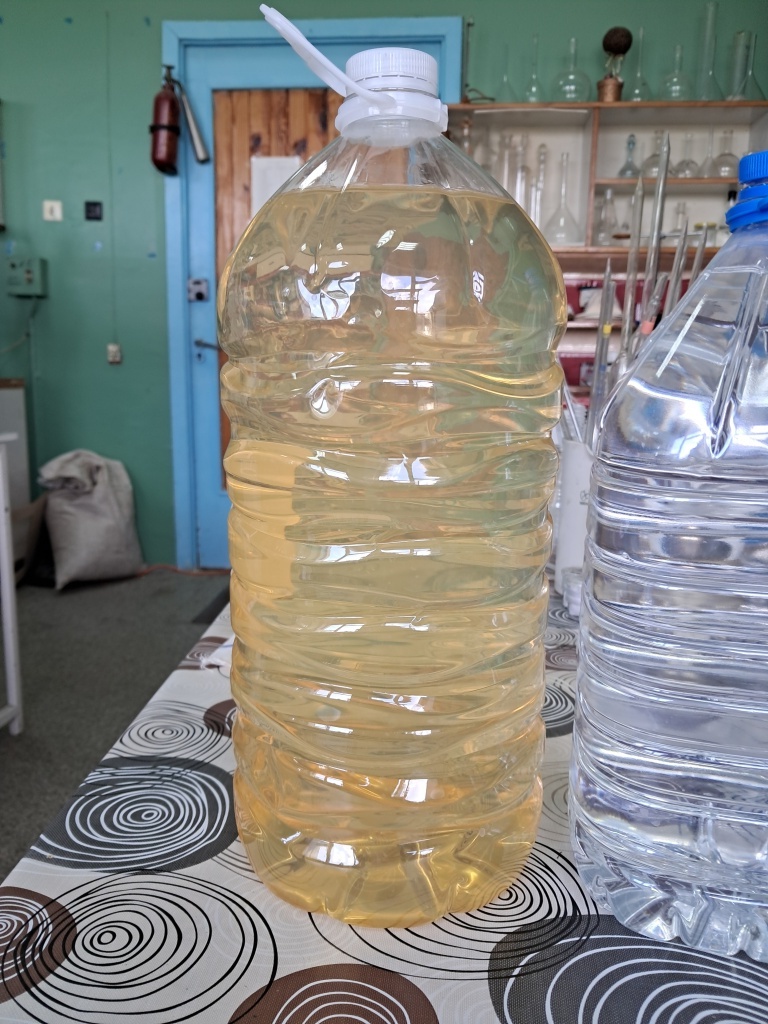
|
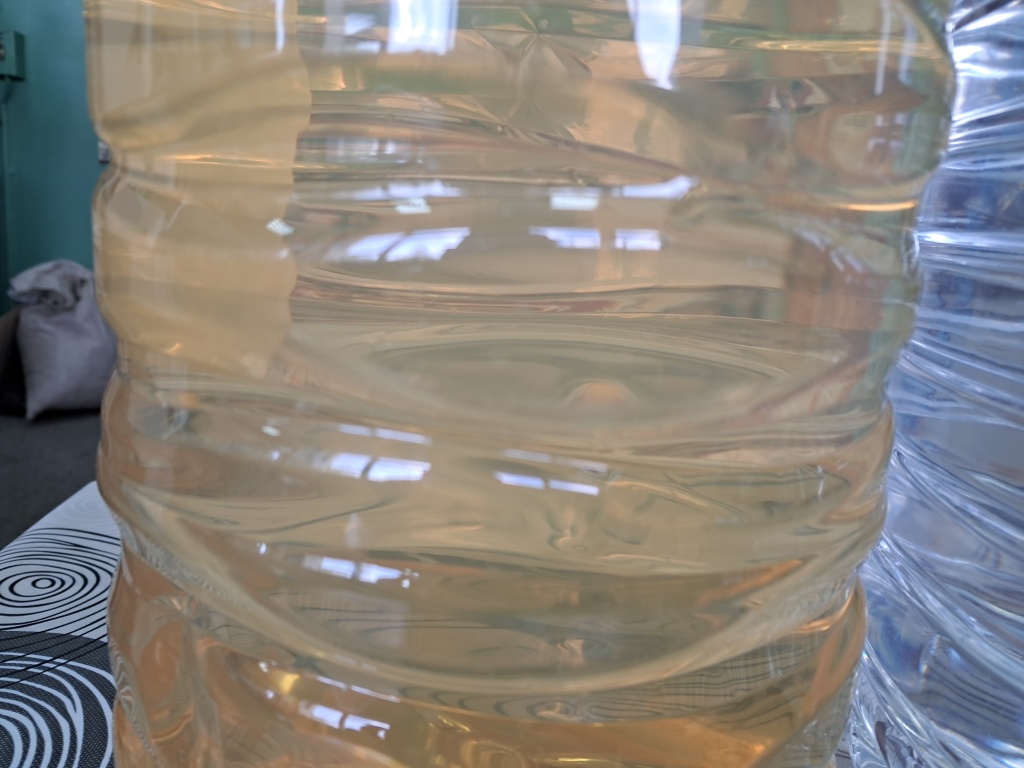
|
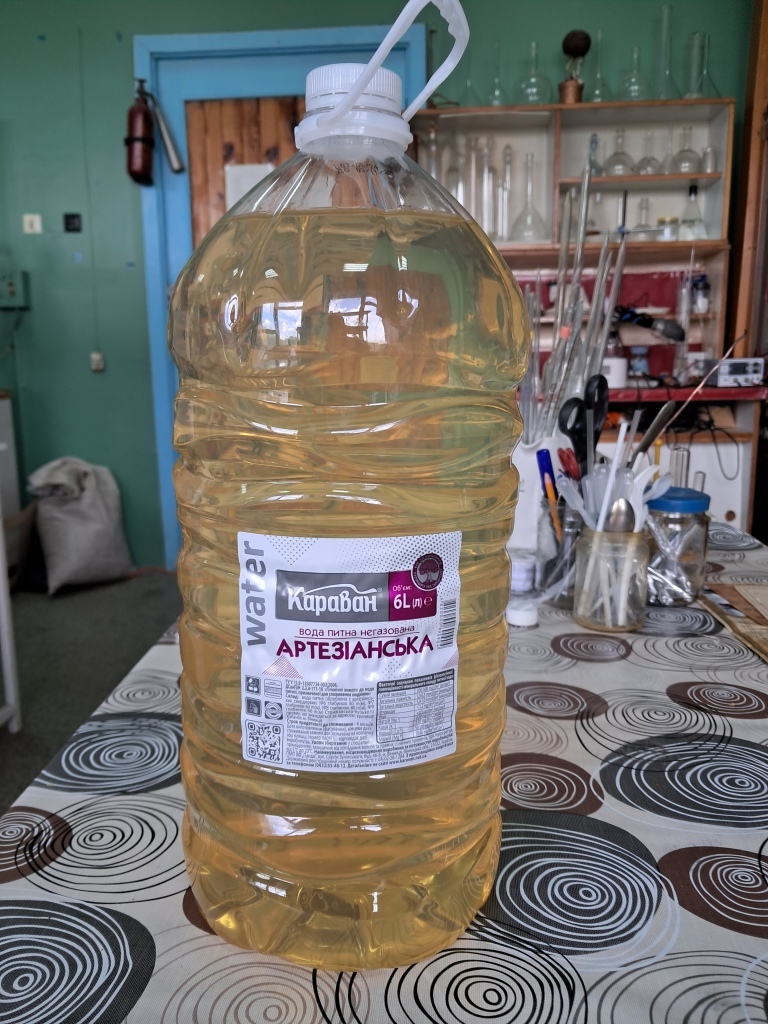
|
|
The next day, I filled another bottle with tap water. Initially, the water appeared yellowish. Over the next day, the yellow tint became slightly more noticeable. After a few more days, a small amount of brown precipitate settled at the bottom. The water remained somewhat colored and slightly cloudy, though it did not compare to the brown suspension that had formed in the previous bottle.
|
|
На следующий день набрал водопроводную воду в еще одну бутылку. Первоначально вода выглядела желтоватой. Через день желтый цвет немного усилился. Еще через несколько дней небольшое количество коричневого осадка выпало на дно. Вода была слабо окрашенной и слегка мутной. Эта вода не идет ни в какое сравнение с той коричневой суспензией, которая образовалась в предыдущей бутылке.
|
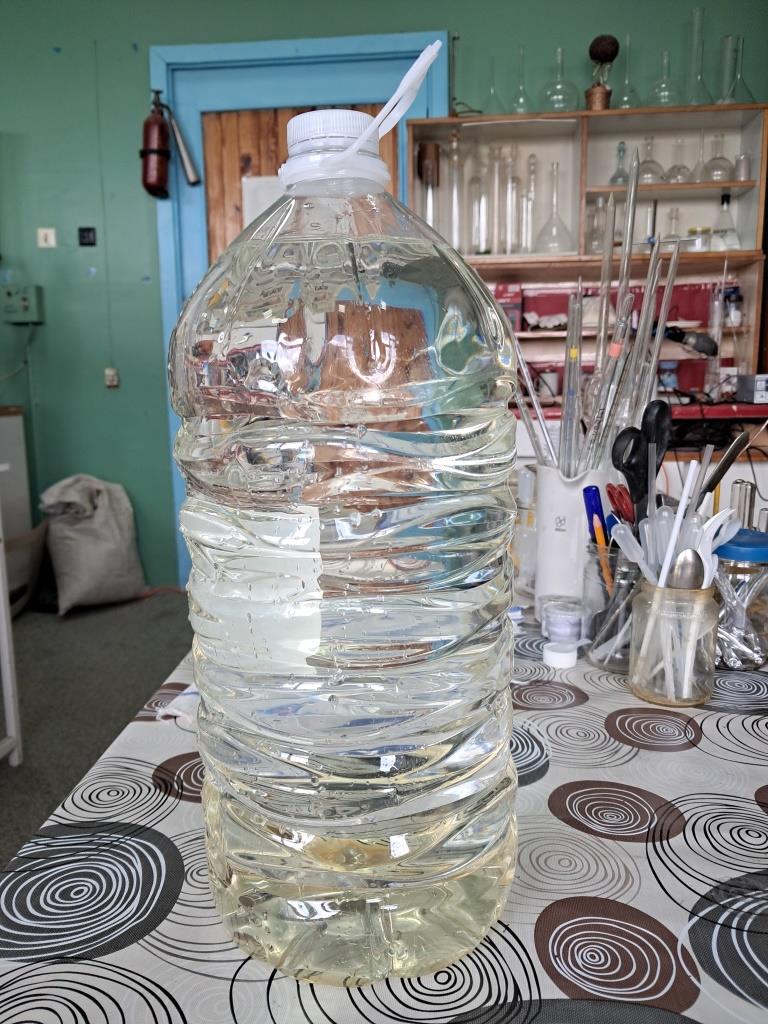
The tap water (the bottle was filled recently) |
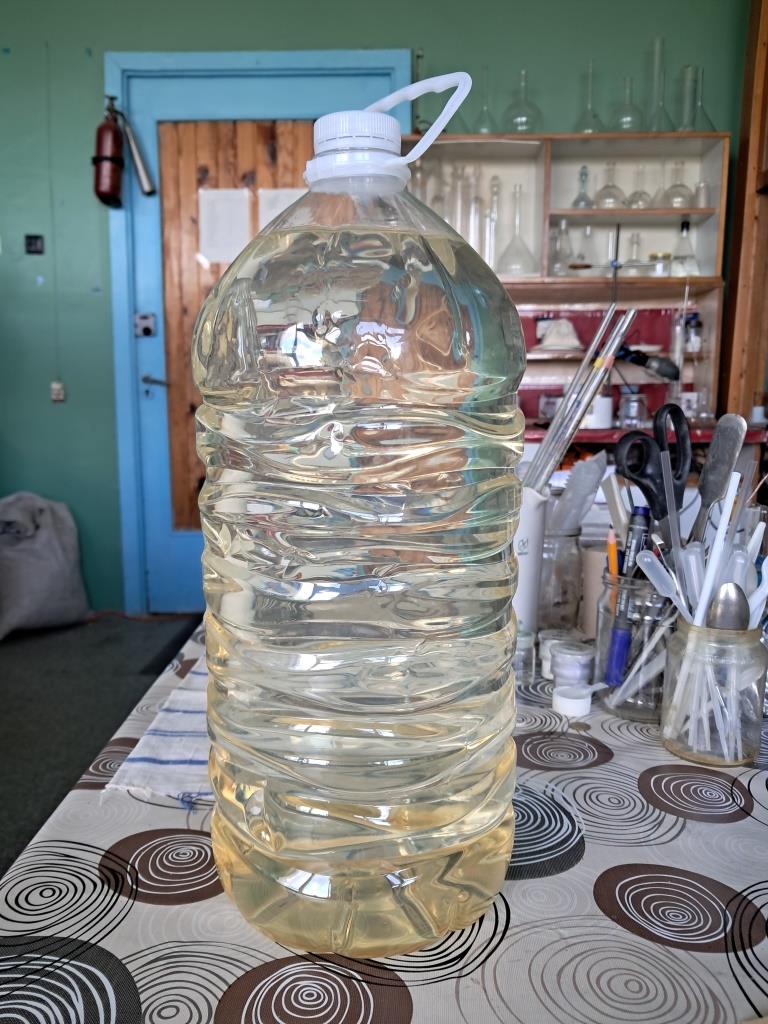
The same tap water in 1 day |
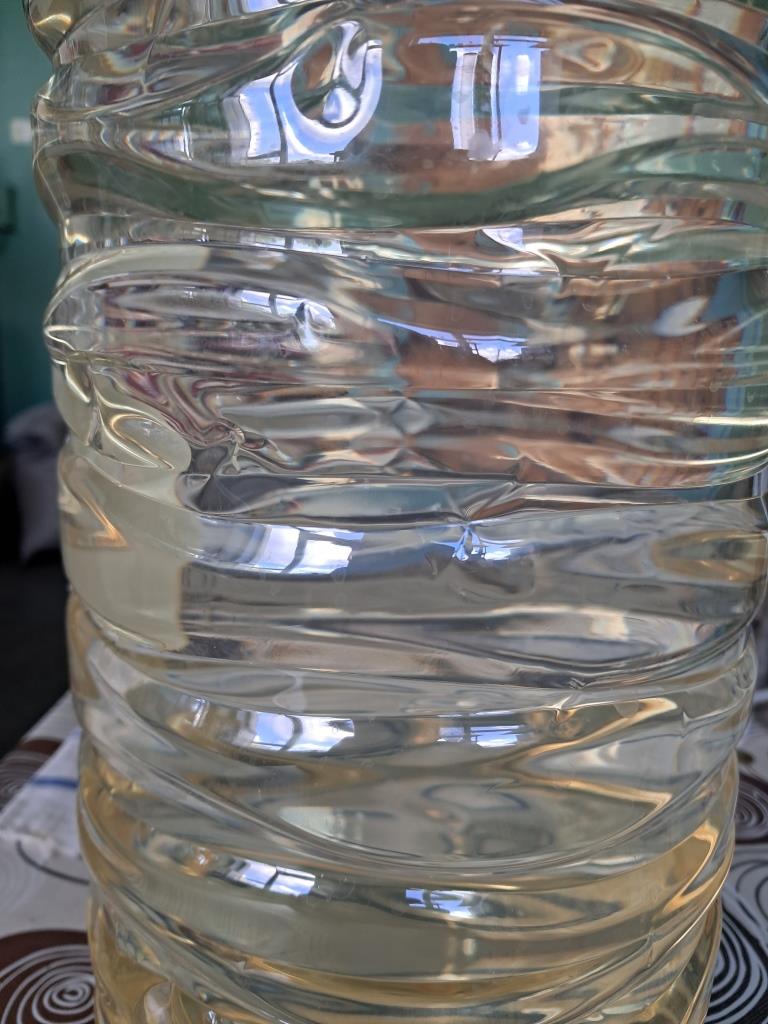
|
|
However, that was not the end of the story. Soon, I had another chance to observe how much iron was in the tap water. I was peacefully working on galvanic coatings without disturbing anyone. I prepared all the solutions for nickel plating using distilled water. Tap water was used only for washing hands.
Unexpectedly, I was tasked with filtering metal suspensions. The amount of sediment I had to filter was unlike anything I had ever dealt with in a laboratory - such amounts you would typically see at a chemical plant, not in a lab setting. The deadlines were tight, so to speed up the filtration, I used a Buchner funnel and a Bunsen flask connected to a water-jet pump, after disconnecting the faulty distiller from the tap. In a water-jet pump, a stream of water flows through, carrying away the pumped-out air. In labs where water conservation is practiced, the water from the pump is usually collected in a barrel and recirculated back into the system. However, in our lab, the water goes straight into the sewer, which is quite wasteful, though that is not the point of this story about iron in drinking water. Now, due to the design of the pump, some water remains in its lower part even after the flow stops. In our case, the pump is made of transparent glass. Initially, the water inside was colorless but turned a deep brown after a few days. |
|
Но и это не конец истории. Вскоре мне выпала еще одна возможность визуально оценить, сколько железа содержится в водопроводной воде. Я мирно занимался гальваническими покрытиями и никого не трогал. Все растворы для никелирования я готовил, используя дистиллированную воду. Водопроводной водой я разве что мыл руки.
Неожиданно мне поручили фильтровать суспензии металлов. Количества были такими, что я никогда в жизни не фильтровал такую массу осадка в лаборатории (на химических предприятиях - было дело, но не в лабораторных условиях). Сроки поджимали. Чтобы ускорить фильтрование, я использовал воронку Бюхнера и колбу Бунзена, к которое подключил водоструйный насос, отсоединив от крана дистиллятор (он все равно был неисправным). Через водоструйный насос проходит поток воды, которая уносит с собой откачиваемый воздух. В лабораториях, где воду экономят, вода после водоструйного насоса стекает в бочку, откуда снова подается в насос. Но у нас вода из водоструйного насоса течет прямо в канализацию. Это очень неэкономно, но к теме железа в питьевой воде данный факт не относится. Так вот, из-за конструктивных особенностей насоса немного воды остается в нижней его части даже после того, как вода перестает поступать в насос. В нашем случае насос стеклянный, а, значит, прозрачный. Первоначально эта вода была бесцветной, но через несколько дней она стала интенсивно-коричневой. |

The water-jet pump |
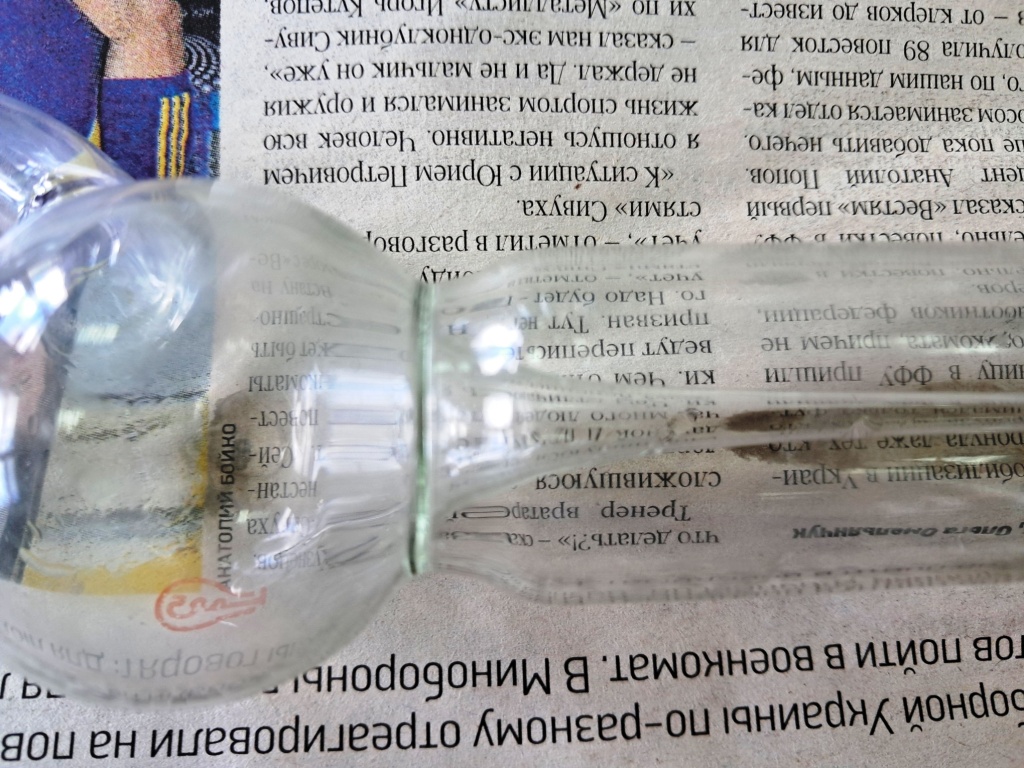
|
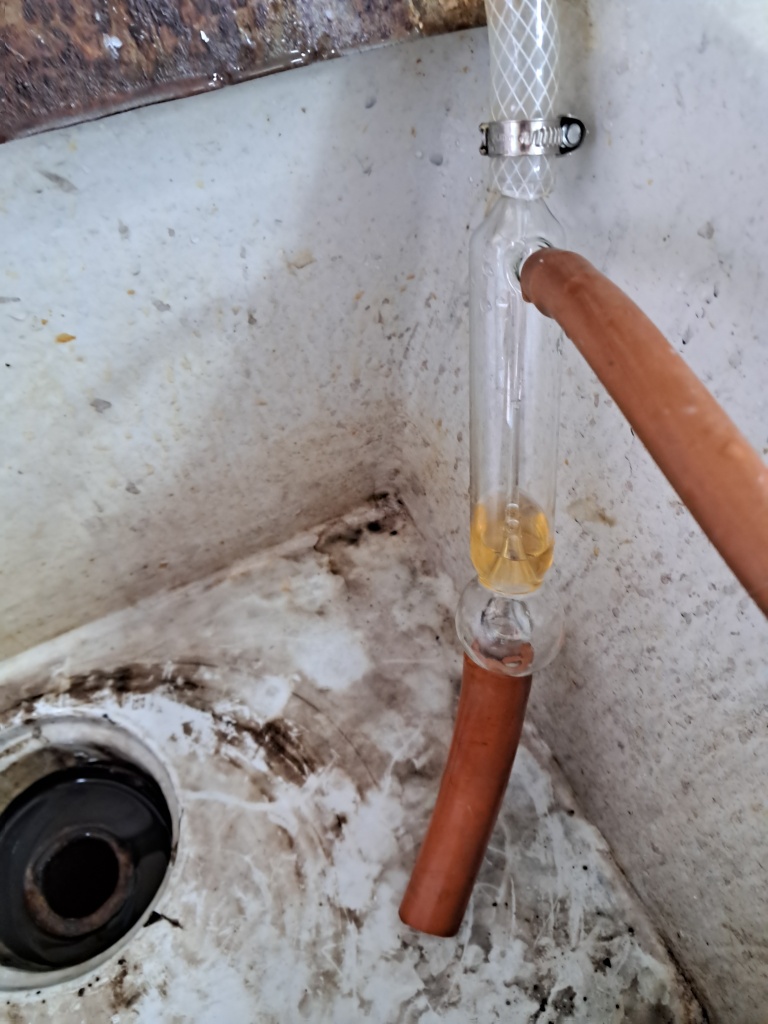
|

|
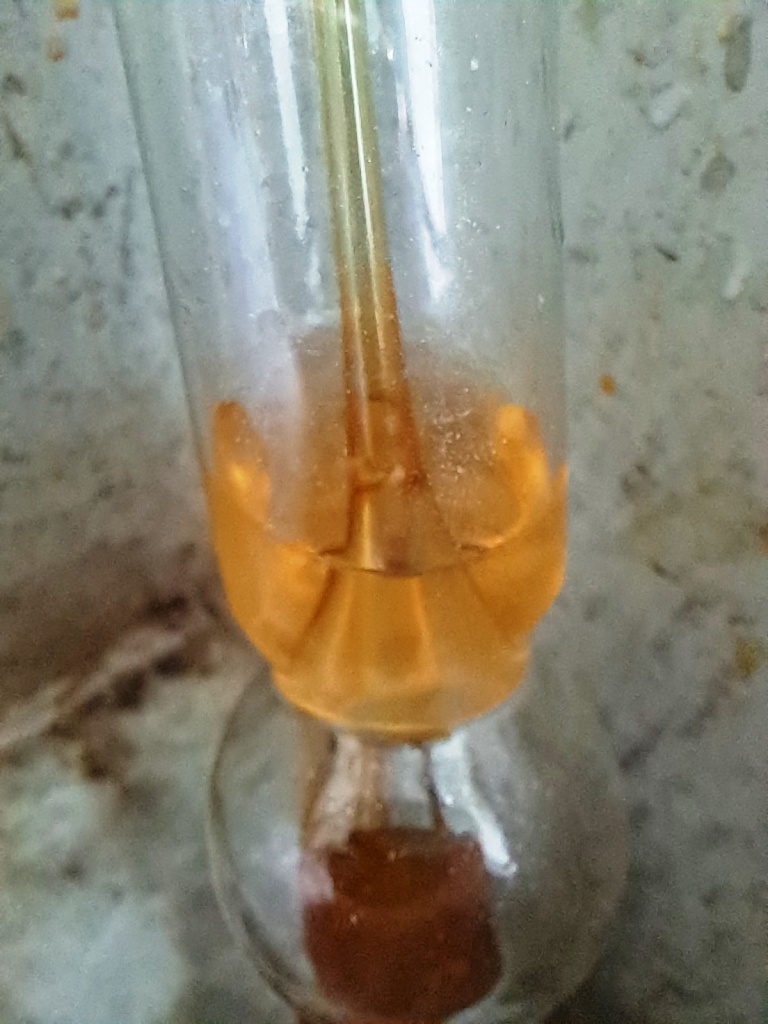
|
|
In conclusion, I would share a few photos of water from a lake located near my house. I used this water for many experiments [2]. Initially, the water was greenish-yellow and cloudy. After standing for 1 month, it became much clearer, a brown sediment fell out, however, the water remained yellow.
Some of this water remained after the mentioned experiments and stood in a closed bottle for about a year since I was busy with completely different work. As a result, the water almost became discolored, and brown flocculent sediment formed at the bottom. The sediment easily formed a suspension when shaken. This is how a layer of silt forms at the bottom of natural lakes, in this way the water self-purifies from organic contaminants (as well as from some inorganic ones). __________________________________________________ 2 For example, Lake water, potassium permanganate and sulfuric acid [link]. |
|
В заключение - несколько фото воды, набранной из озера, расположенного возле моего дома. Я ее использовал данную воду для ряда экспериментов [2]. Первоначально вода была зеленовато-желтой и мутной. При стоянии 1 месяц она значительно просветлела, выпал коричневый осадок, зато вода оставалась желтой.
Часть этой воды осталась после упомянутых экспериментов и простояла в закрытой бутылке целый год, поскольку я занялся совсем другими работами. В результате вода почти обесцветилась, а на дне образовался коричневый хлопьевидный осадок, который легко образовывал суспензию при встряхивании. Так в природных озерах образуется слой ила на дне, а вода самоочищается от органических загрязнений (а также, от некоторых неорганических загрязнений). |

The Lake water |

|

|